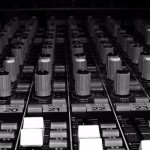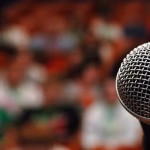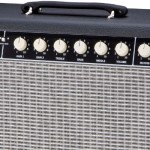Language
Common Guitar Amp Problems And Solutions
Amplifiers are mistakenly analyzed and sent in for repair/returned in light of off-base hookup. Now and then the amp itself truly is to blame. Here are a couple of common problems and what should be possible to investigate, and also settle them (my fixes are the most common. They are not conclusive at all. Your amplifier could have a completely diverse issue. However, it is improbable):
 Live Audio Mixing Tips[/caption]
[caption id="attachment_8389" align="alignleft" width="150"]
Live Audio Mixing Tips[/caption]
[caption id="attachment_8389" align="alignleft" width="150"] Microphone Placement Tips For Live Shows[/caption]
[caption id="attachment_8385" align="alignleft" width="150"]
Microphone Placement Tips For Live Shows[/caption]
[caption id="attachment_8385" align="alignleft" width="150"] Live Performance Tips For Musicians[/caption]
Live Performance Tips For Musicians[/caption]
Problem: Amplifier Does Not Turn On
Solutions: Rule number one in amplifier connect is to ensure the amplifier has a decent ground. This implies it is secured to exposed metal that is spotless, without rust, and tight. Is the remote wire snared? Make sure it is, and that it is caught to the blue wire w/white stripe originating from the head unit, NOT the strong blue wire. After that point, if the issue still exists, you're most likely taking a gander at awful parts in the PSU (control supply unit). Most of the time, this is because MOSFETs are blown. It is never an awful plan to take a stab at connecting the amplifier in an alternate auto or taking it in to be tried just no doubt. Once in a while, you can open the amp up and find physically singed segments. For space imperatives, I'll abandon it at that. Something else, it's feasible that the yield transistors fizzled. With no power connected to the amp, get a multimeter, set it to ohms, and measure the protection between the yield transistors terminals. You should discover none that have anything near zero ohms between any of the terminals. On the off chance that you discover at least one that read ~0 ohms between terminals, they should be expelled from the circuit and checked. If you have a few in parallel, it might appear as if the whole gathering shorted, yet for the most part, one falls flat, and the others are OK. Obviously, when you have one deficient transistor in a gathering of parallel conductors, you should supplant the greater part of the transistors in that group.Open or broken producer resistors can make an amp go into secure. On the off chance that you don't discover any shorted yields, ensure there are no broken terminals on the resistors.Problem: Amplifier Is Getting Too Hot
Solutions: This is typically an aftereffect of the increases/input affectability being set too high. What's more, a lower impedance than the amp is evaluated for can cause this issue (and on account of a lower impedance, it can cause lasting harm). Ensure your pick up isn't turned up the distance, and that there is no less than a touch of dial space between the maximum and where it is at present set. Make certain the speakers are wired to an impedance the amplifier can deal with, and that the speakers are in great working request. If the above have been met and the amplifier is as yet overheating, the best activity includes outer cooling fans. PC fans work awesome, and I propose getting the 3-5" models. They can be hard wired to the auto's electrical framework, and a straightforward switch can be wired inline to turn them on and off.Problem: Amplifier's Volume Is Lower Than Normal
Solution: Many new amplifiers have assurance hardware that will restrain the volume on the off chance that they start to get excessively hot. For this situation, you would need just need to lay off the volume for a bit.Final Thoughts ...
It should be noted the problems and solutions discussed above won't apply to every single situation when it comes to your amplifier. But with that said, it should definitely cover the most common problems you'll eventually bump into.Your Turn to Sound Off!
What are some other common amplifier problems?Let us know in the comment section below!
Other Stories You Might Like ...
[caption id="attachment_8358" align="alignleft" width="150"] Live Audio Mixing Tips[/caption]
[caption id="attachment_8389" align="alignleft" width="150"]
Live Audio Mixing Tips[/caption]
[caption id="attachment_8389" align="alignleft" width="150"] Microphone Placement Tips For Live Shows[/caption]
[caption id="attachment_8385" align="alignleft" width="150"]
Microphone Placement Tips For Live Shows[/caption]
[caption id="attachment_8385" align="alignleft" width="150"] Live Performance Tips For Musicians[/caption]
Live Performance Tips For Musicians[/caption]

